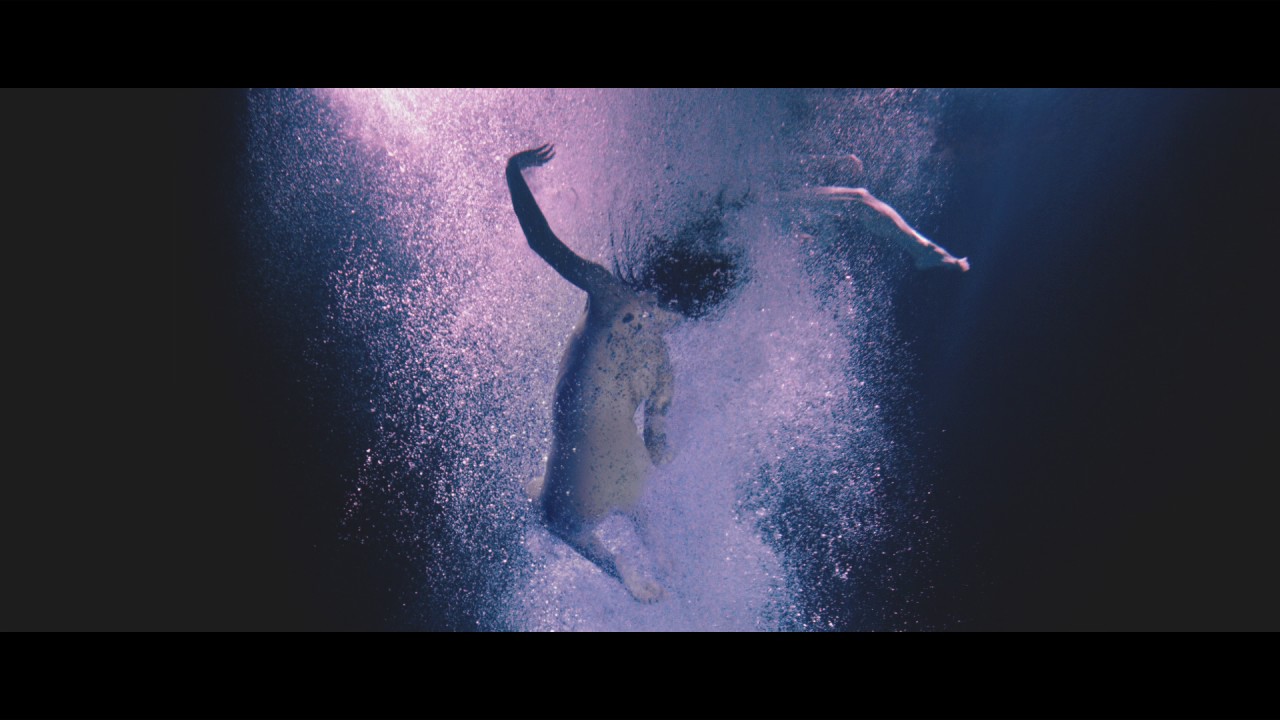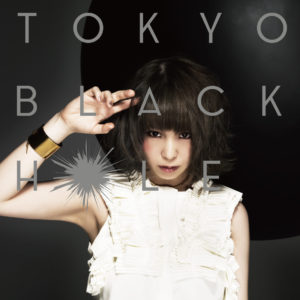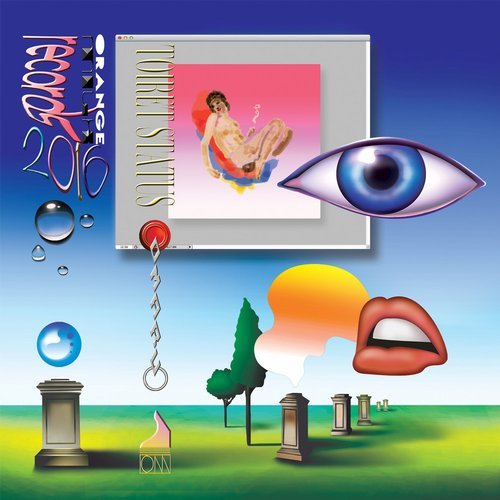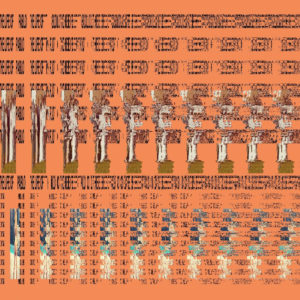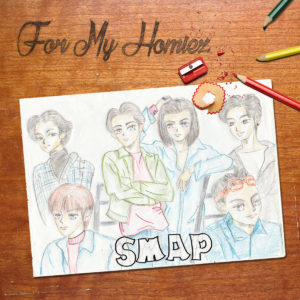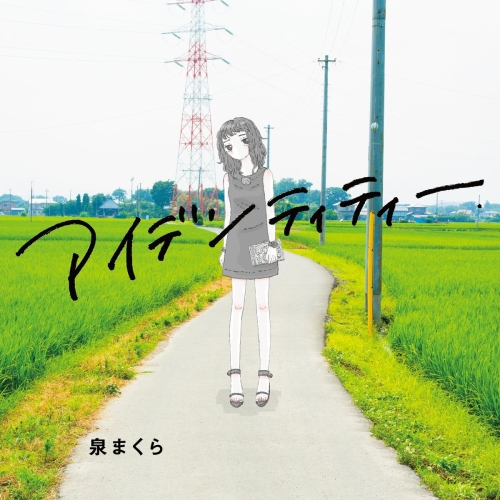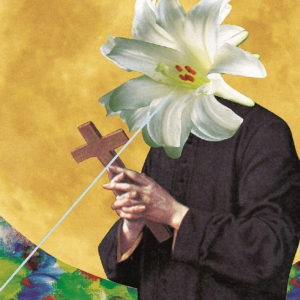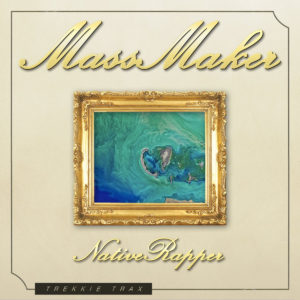Make Believe Melodies’ Best Japanese Albums #20 – #11
#20 Cicada Formula
It’s easy to recreate the past, as no shortage of Japanese bands borrowing from ’80s city pop and ’90s acid jazz have shown in recent years (and, really, globally…this is all Daft Punk’s fault). Cicada’s earliest work slid in nicely to this safe but oftentimes overly familiar space. But Formula decided to bring familiar musical ideas and styles to the present day, working in elements of contemporary electronic music to give well-worn sounds a new kick. It almost sounds too obvious, and potentially goofy — the past, but with bass drops! — but Cicada pull it off elegantly, managing sweet turntable-scratch-backed throwbacks such as “Drop” alongside the heliumed-up pop of “Port Late” and the electro-skip of “Influx.” In a year full of just staring back, Cicada showed bridging time could be done.
#19 Oomori Seiko Tokyo Black Hole
If Sennuo was a masterclass in Oomori Seiko doing Oomori Seiko, Tokyo Black Hole is peering a bit deeper into just what that means. Nothing she does can really be described as more reigned in, considering Seiko loves to let her voice howl and break. Yet Black Hole feels a touch more reflective, at least for an artist as unpredictable as her. Or maybe it is just a slow grower — this album sounds way better now than when it came out, to me at least, the moments that came off as too safe on first brush revealing far more depth as time has went on (seeing it live helped, too). I think it comes down to her previous work being a constant set of surprises, whereas here the twists were subtler, built in to songs. Ask me in five years, and this one could be way higher up. What I do know now — Black Hole does feature a handful of Seiko’s finest moments yet, including the title track and, especially, “Magic Mirror,” her finest number to date, and the best at showing the energy and passion she brings to music.
#18 Various Artists Trekkie Trax The Best 2012 – 2015
The internet has changed drastically in recent times, but even as major advertising dollars seep into music websites and streaming further gifts power to bigger labels, there will always be upstarts willing to find space online to create their own world. Netlabel Trekkie Trax made big moves forward in 2016, releasing plenty of great music (stay tuned to this list), touring relentlessly and establishing themselves as the digital imprint most in tune with a younger generation. Even when their releases don’t connect with me, I recognize the excitement these sounds are instilling in younger listeners — it feels familiar, the same way downloading a new Maltine .zip file felt when I was 24. The Best 2012 – 2015 acts as an incredible summary of what they’ve been up to since arriving, featuring tracks from all of Trekkie Trax’s biggest players and touching on sounds both cutesy (Snail’s House’s “Kirara”) and crushing (Masayoshi Iimori’s “Break It”). It’s a great time capsule, sure, but don’t twit that too much — songs such as Lolica Tonica’s “Make Me Feel” and Amunoa’s “Cinderella Song (VIP)” sounded every bit as thrilling across 2016 as they did when they first became available to download. Get it here.
#17 Toiret Status Omaru
Honestly, I’m still not sure how the fuck Toiret Status could pull melodies like the ones on Omaru out of the chaos he favors. Of all of Orange Milk Record’s Japanese releases this year, this one still makes the least sense to me. Maybe that’s just because Isamu Yorichika’s full-length came out relatively suddenly, whereas DJWWWW and Foodman have been playing with their sound for a while. Yet across the 12 songs here, Toiret Status stitches quick slaps of guitar, split-second sputters and twisty synth together to create legitimate songs. They sound like they are about to collapse at any second, but never do. The sounds highlighted here are a treat in themselves — headphones recommended — but Omaru’s real triumph is how all those noises fall into place just right. Get it here.
#16 TOYOMU Imagining The Life Of Pablo And Yellow Dancer Arrangements
Imagining The Life Of Pablo went viral in the West this spring because it gave publications a chance to run another photo of Kanye West on their site. That isn’t cynical as much as it’s a reflection of the online world of 2016 — TOYOMU himself hoped that would happen, albeit he didn’t expect it to turn into the thing it did. Still, despite being a click-ready news novelty that the young Kyoto producer has already moved on from, Imagining as album manages to be a fascinating — and fun — listen as the year closes out. Some of that stems from how interesting it is, as the most famous example of independent Japanese artists drilling right through context to create something refreshing. Yet it’s also just full of jarring and surprisingly clever combinations, from MacTalk vocals singing about bleached assholes over soulful beats to vaporwave interpolations.
What it highlights is a burgeoning young creator’s creativity, and Imagining pairs well with another album rework project that came at the very start of the year, Yellow Dancer Arrangements. Whereas he pulled out his own Pablo from his own cranium, Arrangements found TOYOMU reworking all of Hoshino Gen’s Yellow Dancer, and transforming easy-breezy J-Pop into far stranger shapes, highlighted by the decision to stretch out the fuzzy beginning of his big 2015 hit “Sun” into a drone track. He released a lot in 2016 — including takes on Fantome and an original EP — but these two showed two sides of his style at their most ambitious.
#15 Sportsmusicassemblepeople For My Homiez
I’ve talked to multiple people — some of who like J-Pop but shun the goofy boy bands coming out of the Johnny’s factory, and others who do all they can to listen to no Japanese music — who are generally bummed out about the soon-to-be-official end of SMAP. Small sample (or should I say…SMAPle) size, sure, but each person has expressed a melancholy for a Japanese music institution like SMAP coming to a close, one person even likening them to Mickey Mouse. No shortage of sociology papers could be written on this, and in the context of J-Pop 2016…a year where celebrating older artists became the norm in the back half…all the drama around them feels especially telling, at least to folks of a certain generation.
As the goofy “z” attached to the word “homies” implies, For My Homiez can get pretty stupid. Released after SMAP’s awkward “apology” video where it looked like four of the members would be dropped into an alligator pit, but before they actually announced their end, this compilation of various artists (many familiar names using one-off titles) gathered under the name Sportsmusicassemblepeople moniker runs from simply inspired by SMAP (many inclusions are just really good beats, often featuring samples of SMAP…which feels sorta daring, still) to ironic (the second song here is a trap-style rap number and boy does it suck). Yet what makes this interesting is how often it all sounds sincere — for all the goofs, there are also outright covers of SMAP songs, and they sound deeply earnest (or they are on some real deep irony level). Even numbers just sampling the boy band, from acid-house bangers to skittery future bass, rarely sound jokey. For My Homiez would never work as total joke, and the mix of appreciation, mockery and earnestness (inadvertently?) leads to something far more interesting — an album looking at SMAP from many perspectives, and puts them in different lights. Get it here.
#14 Izumi Makura Identity
“Whisper rapper” Izumi Makura has been moving in this direction since appearing in 2011, but Identity arrived this year as her most fully formed effort yet. The Fukuoka artist didn’t shoot off in any new directions, but simply polished everything she had done previously. Her heart is firmly on sleeve over sparse piano-guided numbers such as “School Road” and “P.S.,” and she still glides over wonkier beats provided by the like of Foodman (you might be noticing a theme). Makura has never sounded more ready for a larger stage — fittingly, she’s started gaining a bit more widespread attention as the year comes to a close — but she hasn’t lost her introspective side in the process, with Identity wrestling with the arrival of adulthood (the last song translates to “Goodbye, Youth” and rejects simple happy endings in favor of something more complicated).
#13 Emerald Four I Want To Be A Saint
Floating alone in space doesn’t have to be a totally miserable experience. Kyoto’s Emerald Four know this well, having spent all of 2014’s Nothing Can Hurt Me drifting aimlessly, occupied only by memories and synthesizers. They still move at the same speed on I Want To Be A Saint but the lonely reflection has made space for a few more playful and adventerous moments. They can still get sparse and melancholy — the acoustic-guitar-backed “Good Night” might be their most outright sad moment, defeated rather than dealing — and “Tameiki” highlighted them at their most bleary eyed, half exhausted and half hopeful. Yet they also got bouncy on “Always With You” and downright silly on “Tanuki Song.” And it all ends with uncharted territory for the duo on “Adventure Of Spiritual Amazon,” which added an electronic tropicalness to their sound. You never know where you’ll float off to. Get it here.
#12 Yoshino Yoshikawa Event Horizon
The cuddly melodies and chirpy vocals — run through effects or natural — that have long popped up on electronic producer Yoshino Yoshikawa’s songs, which have in their most sugar-addled forms focused on topics such as candy and cats. He even added new touches to his sound, such as Vocaloid software. Yet listening to Event Horizon rarely feels like a kawaii experience. Yoshikawa and the singers hopping over his twinkling tracks focus on issues corners of the music world fond of anime artwork rarely approach, ranging from big data to the very nature of humanity in a world only becoming more digital and A.I.-fied. It’s wrapped up in a pop sheen but carries far heavier themes, like sliding a disk containing HyperNormalisation into the case for Pets>.
Which isn’t to take away from the music, either. Yoshikawa continues to create some of the more enchanting melodies of anyone operating primarily online, and beefs them up with passages inspired by Jersey Club, among other styles. It’s one of the finer collections of pop music to come out of Japan this year. But beneath the hookiness, Yoshikawa also dwelled on a variety of issues that gave Event Horizon a persistent sense of tension. Get it here.
#11 Native Rapper Mass Maker EP
Near the end of fashion store Beams’ 40th anniversary music video, tofubeats pops up alongside Seira Kariya, joined on his right by an assortment of hashtags, such as “#cloudrap” (referring not to this, I think, but maybe). One of them is “#maltine,” and it is a bit jarring to see a netlabel in the same clip alongside “#shibuyakei” and “#TRACK_SUITS.” But it shows how far this corner of the internet has come, from a bunch of kids stuck in the suburbs trading tracks on message boards to generational shorthand.
Despite the changing landscape of the internet pushing even Maltine itself to consider new routes, the legacy of Japan’s netlabel scene felt cemented in 2016, with a new crop of artists emerging who clearly were inspired by the artists operating from these digital imprints. Kyoto’s Native Rapper certainly fits the bill. Most immediately, his vocal delivery, run through a layer of electronics, recalls tofubeats, but the music he makes also takes cues from the Technicolor pop of Avec Avec, among others thriving in online spaces. Yet he isn’t simply imitating, but developing his own style, one building from the netlabel idea of tearing down genre walls and going one more step…by making it all sound so natural. “Water Bunker” fizzes and features rapped verses building to a bounce-along chorus, while “Ecstasy Of Kiss” imagines skeletal R&B full of gloopy pitch-shifted vocals dripping into a solid form.
Besides an eclectic sonic palette, the Mass Maker EP stands out for the energy and optimism gushing through it. And I don’t mean in a “can someone try unplugging and plugging back in 2016” cheeseball way. Rather, Native Rapper sounds fired up about music, and the creation of it, and of jumping off from where the artists who influenced you are and creating your own mark. It’s best summed up on “Track Maker,” a skippy electro-pop number that finds Native Rapper singing about…track makers, and observing how cool that idea seems. Mass Maker is what comes next. Get it here.
